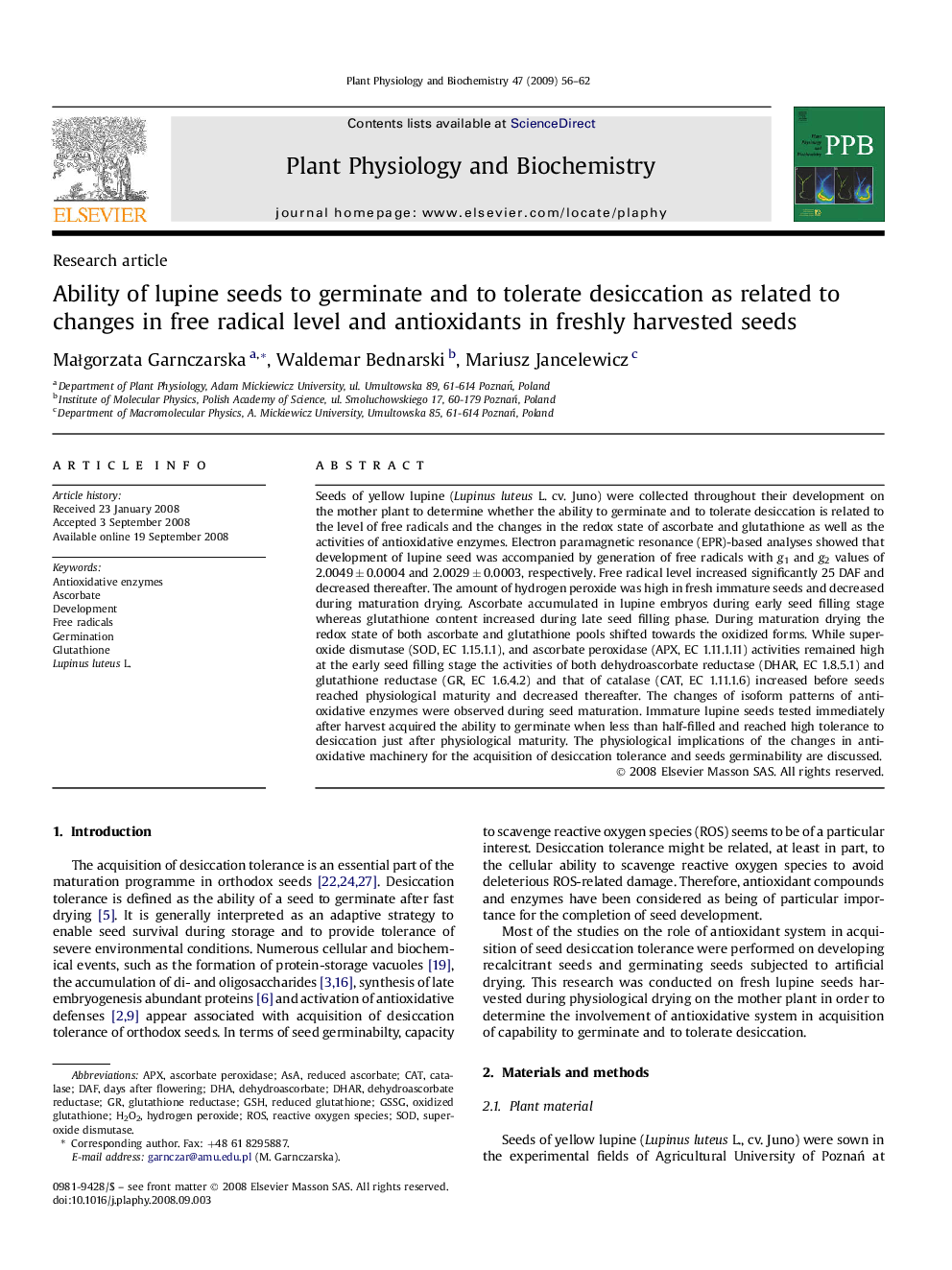| Article ID | Journal | Published Year | Pages | File Type |
|---|---|---|---|---|
| 2015420 | Plant Physiology and Biochemistry | 2009 | 7 Pages |
Seeds of yellow lupine (Lupinus luteus L. cv. Juno) were collected throughout their development on the mother plant to determine whether the ability to germinate and to tolerate desiccation is related to the level of free radicals and the changes in the redox state of ascorbate and glutathione as well as the activities of antioxidative enzymes. Electron paramagnetic resonance (EPR)-based analyses showed that development of lupine seed was accompanied by generation of free radicals with g1 and g2 values of 2.0049 ± 0.0004 and 2.0029 ± 0.0003, respectively. Free radical level increased significantly 25 DAF and decreased thereafter. The amount of hydrogen peroxide was high in fresh immature seeds and decreased during maturation drying. Ascorbate accumulated in lupine embryos during early seed filling stage whereas glutathione content increased during late seed filling phase. During maturation drying the redox state of both ascorbate and glutathione pools shifted towards the oxidized forms. While superoxide dismutase (SOD, EC 1.15.1.1), and ascorbate peroxidase (APX, EC 1.11.1.11) activities remained high at the early seed filling stage the activities of both dehydroascorbate reductase (DHAR, EC 1.8.5.1) and glutathione reductase (GR, EC 1.6.4.2) and that of catalase (CAT, EC 1.11.1.6) increased before seeds reached physiological maturity and decreased thereafter. The changes of isoform patterns of antioxidative enzymes were observed during seed maturation. Immature lupine seeds tested immediately after harvest acquired the ability to germinate when less than half-filled and reached high tolerance to desiccation just after physiological maturity. The physiological implications of the changes in antioxidative machinery for the acquisition of desiccation tolerance and seeds germinability are discussed.
